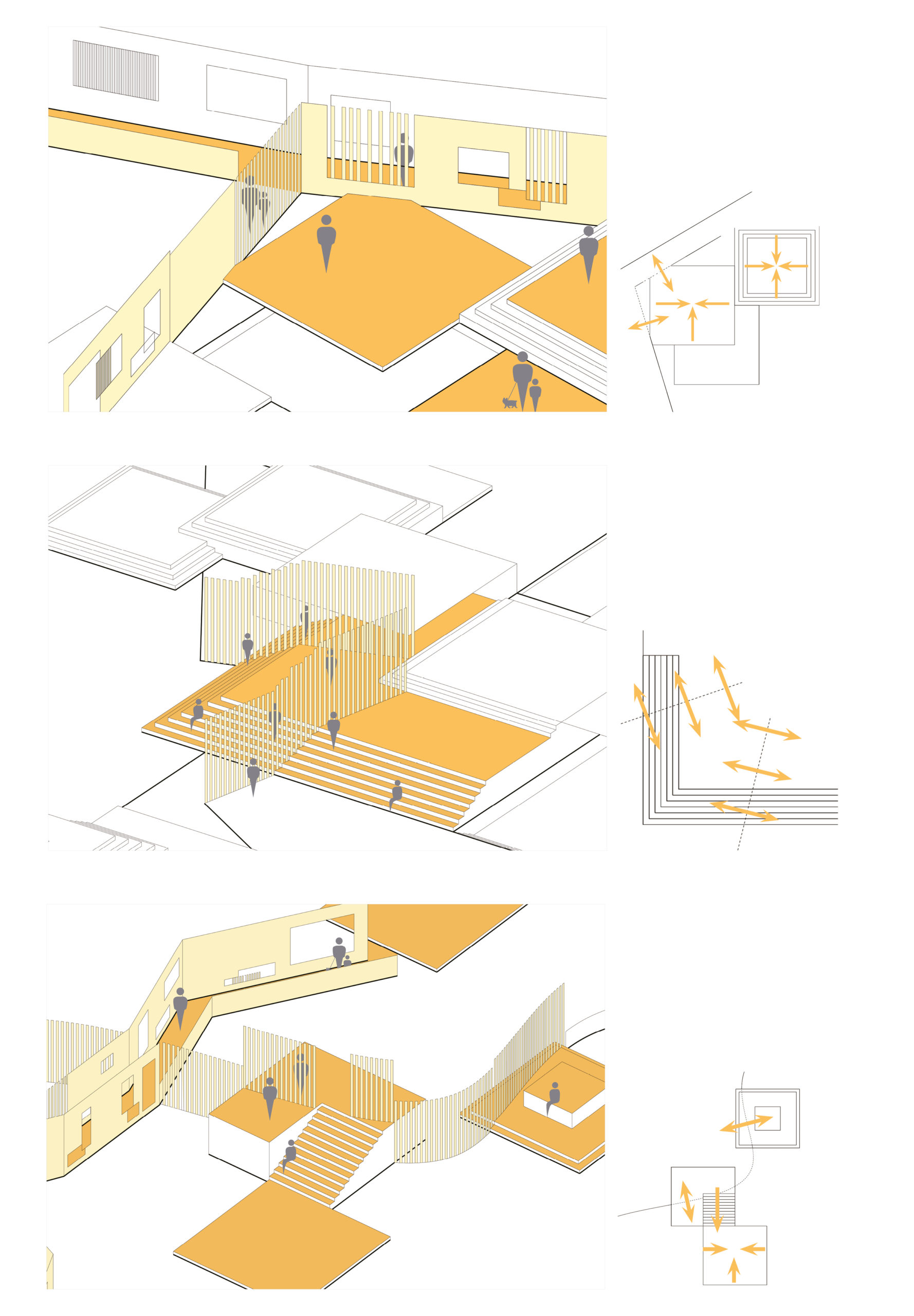Theoretical & Prototypical research
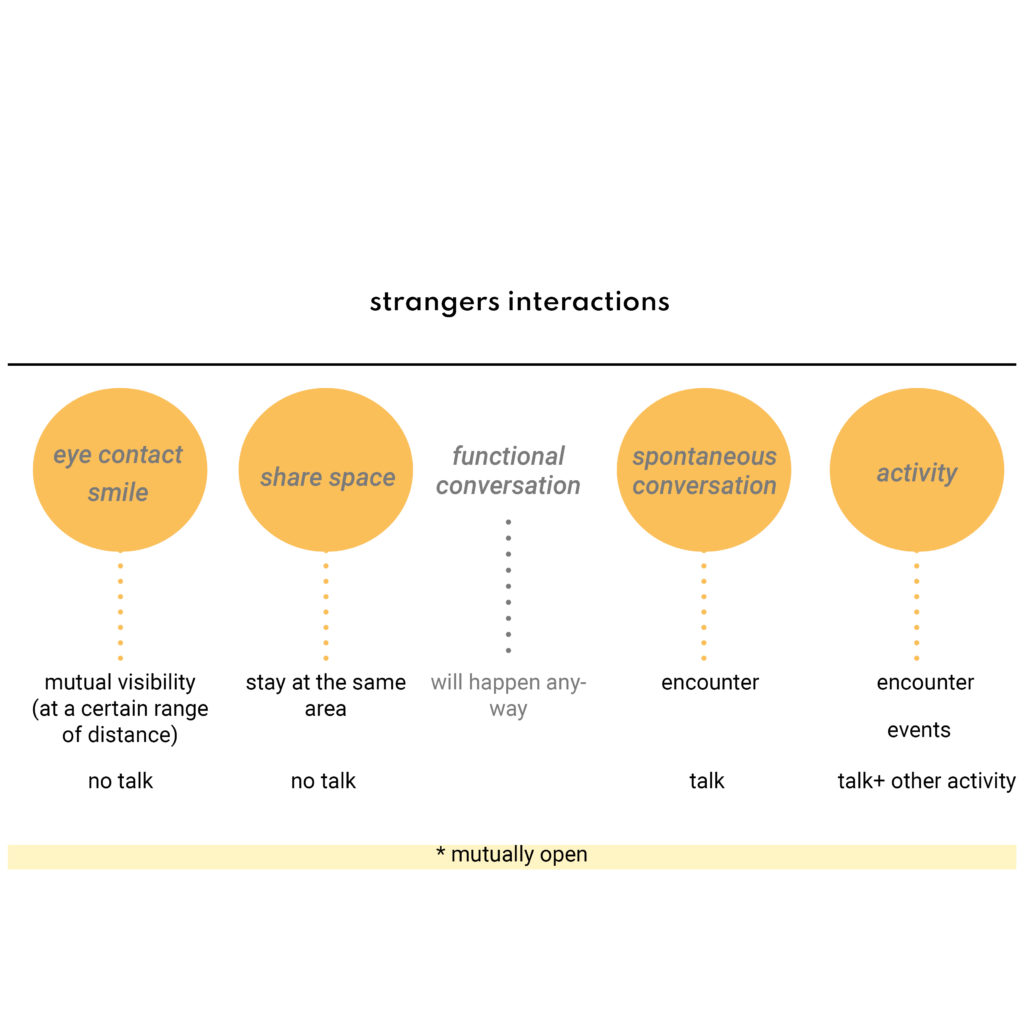
Unlike interactions among acquaintances, strangers’ interactions usually happen spontaneously and in low level. Here I listed out different types of strangers interactions, like eye contact, smile, spontaneous conversations. But just as Goffman said, “Unacquainted persons always need a reason to enter a face engagement.” The same requirement for all these interactions is the mutual openness between two strangers.
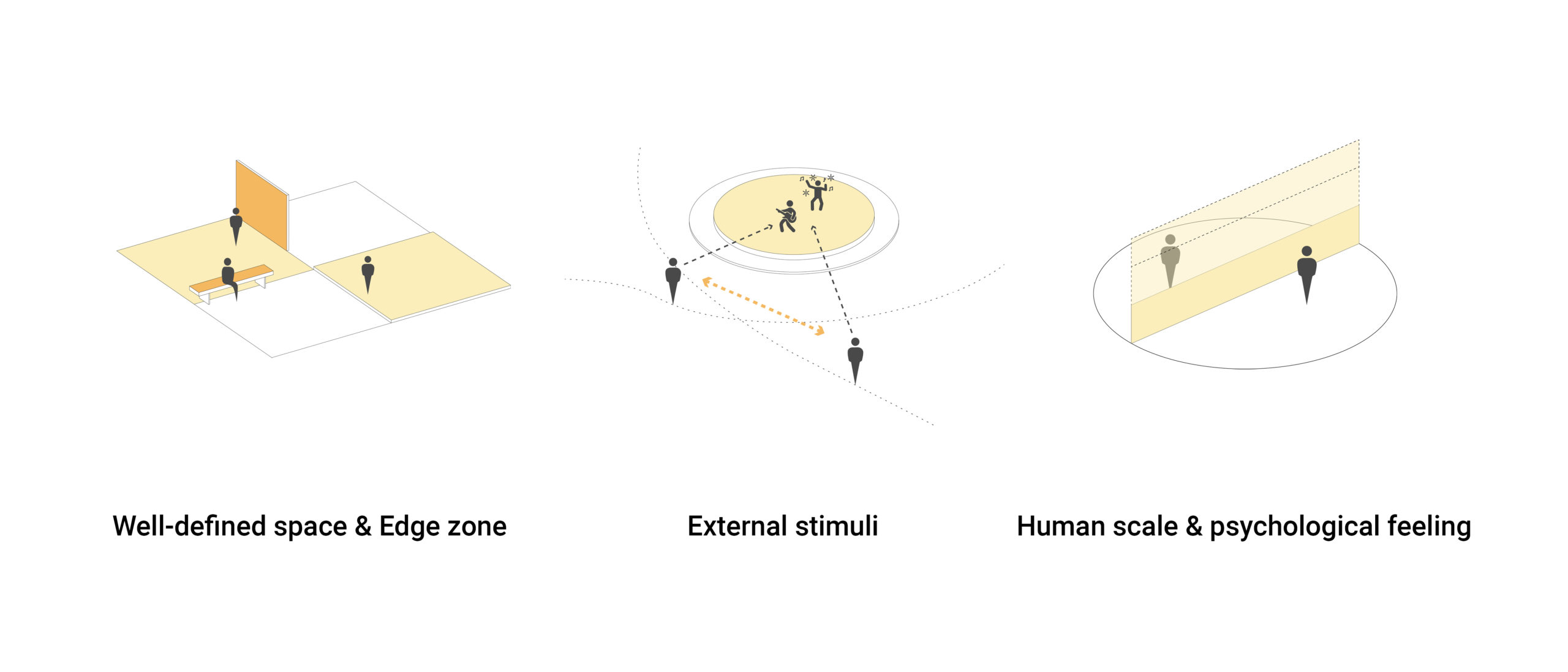
There are multiple factors that can affect the willingness of interacting with strangers, for instance, peoples’ different cultural backgrounds and personalities. In this thesis, I will only focus on the spatial reasons and try to create this kind of space where people can feel easier to interact with strangers.
These conclusions can be drawn from all the previous theories:
- Well-defined space can attract more people. And if this is a space for social meetings or events is happening on site, it will be even more popular. Multiple edge zones can be created to guide peoples’ movement or afford a space to stay. A niche by the edge can increase the chances of people’s stay.(Mattsson, 2019)
- Introducing or designing some external stimuli can promote strangers interaction. The stimuli can be some events, some objects, like a statue, fountains, or good views of these objects and events.
- The human scale should be taken care of. Space designed in uncomfortable scales can be a negative effect on strangers’ interaction.
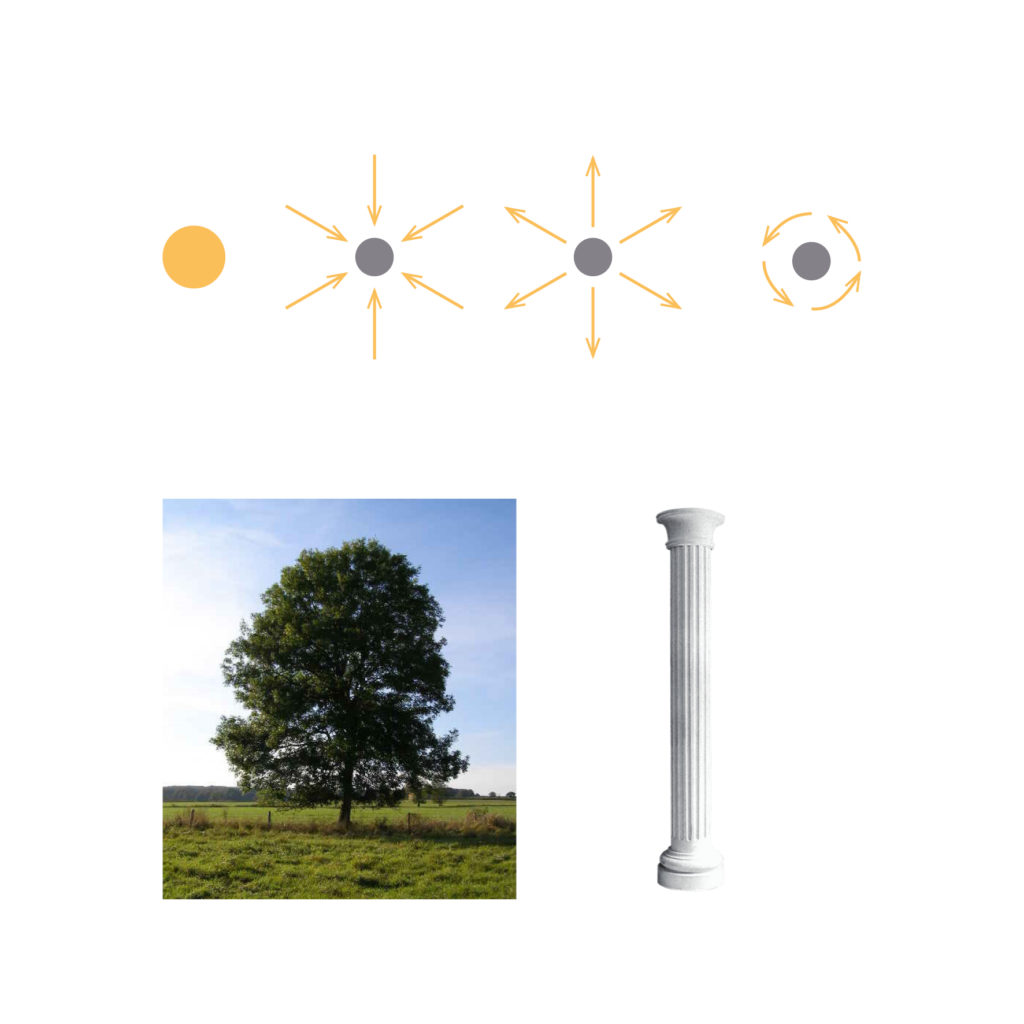
Point 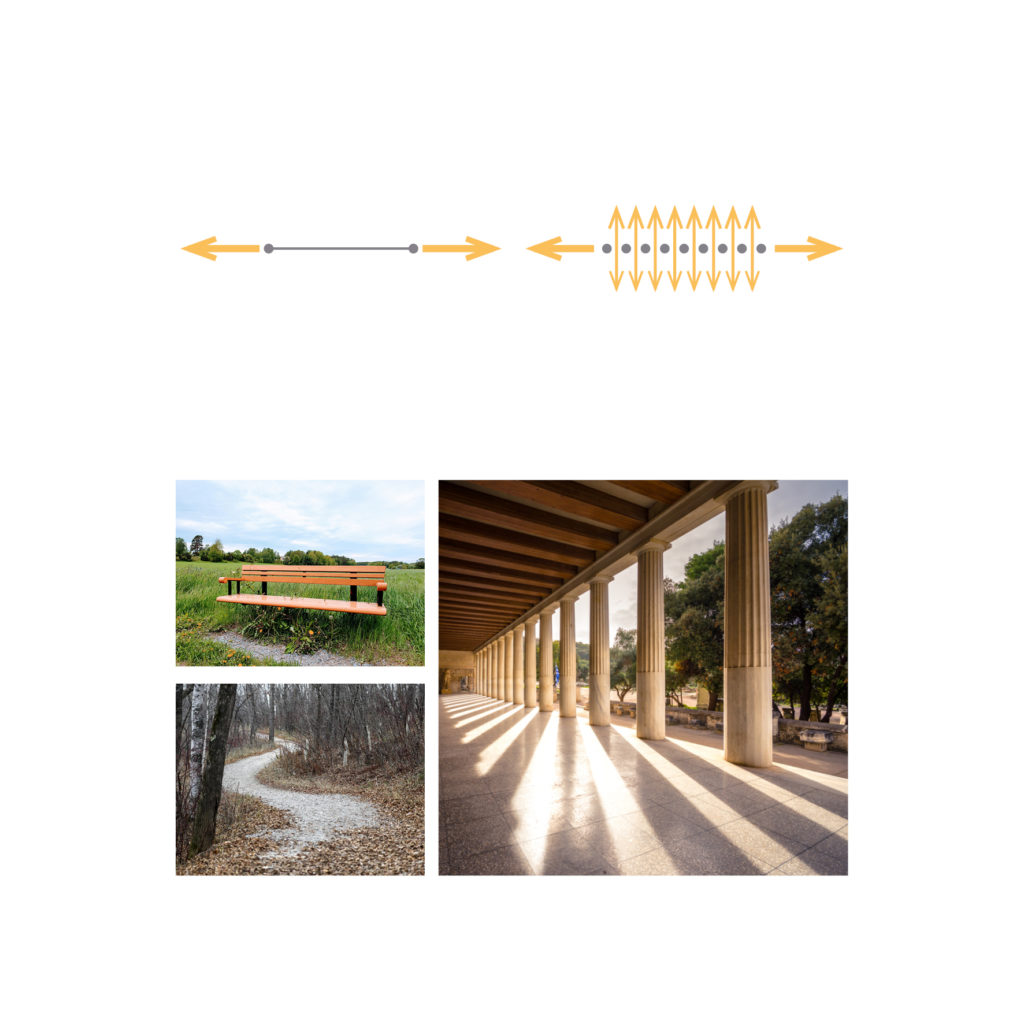
Linear 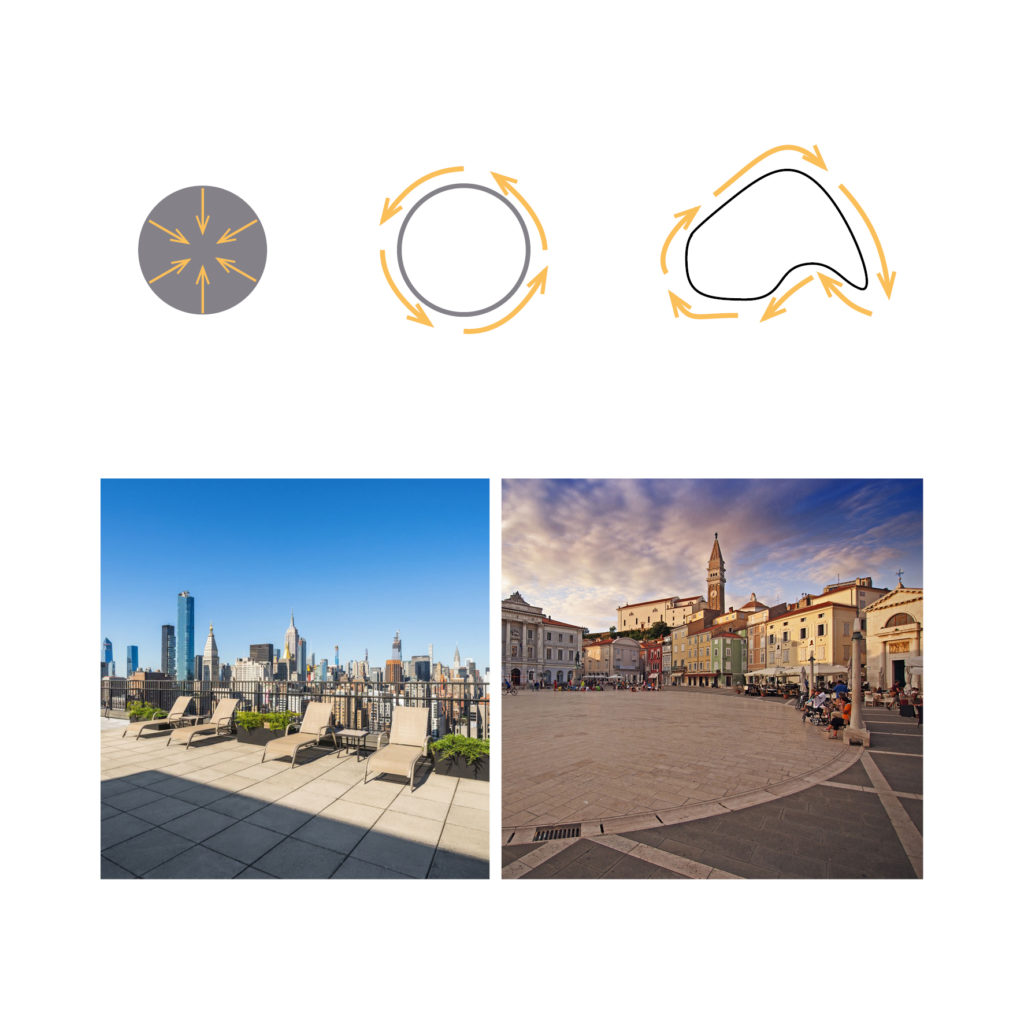
Planar
2. https://www.intergesso.com/en/product/high-column-in-plaster-z320/
3. https://sv.m.wikipedia.org/wiki/Fil:The_Lonely_Bench.jpg
4. https://www.duluthnewstribune.com/business/tourism/4761394-Duluths-renamed-Western-Waterfront-Trail-to-grow-share-corridor-with-excursion-train
5. https://www.shutterstock.com/image-photo/stoa-attalos-agora-athens-greece-built-772125256
6. https://streeteasy.com/blog/terrace-vs-balcony-whats-the-difference/
7. https://travelslovenia.org/tartini-square-piran/
I then started my elemental research and tried to understand the dynamics in between them. According to Franziska(2011), point elements are directionless and static. It can be a tree or a column. But a row of columns is a linear element, which is strongly directional. And there are also planar elements like plazas or terraces which are fundamental for all events and activities.
For my thesis, I selected several design elements that are relevant for my research.
The first element is vertical surfaces, which are linear elements. It can provide edge zones and can also be an object itself. There will be two types of vertical surfaces. If the surface goes against the movement, it will function as interruptions and give people a sign to shift the direction, which will lead people to discover some new spaces and narratives; if it goes along the movement, it will separate spatial continuum and also the pedestrian flow temporarily and cause spatial filtrations in between two spaces. The following parameters defined different levels of the enclosure and different levels of spatial permeability.
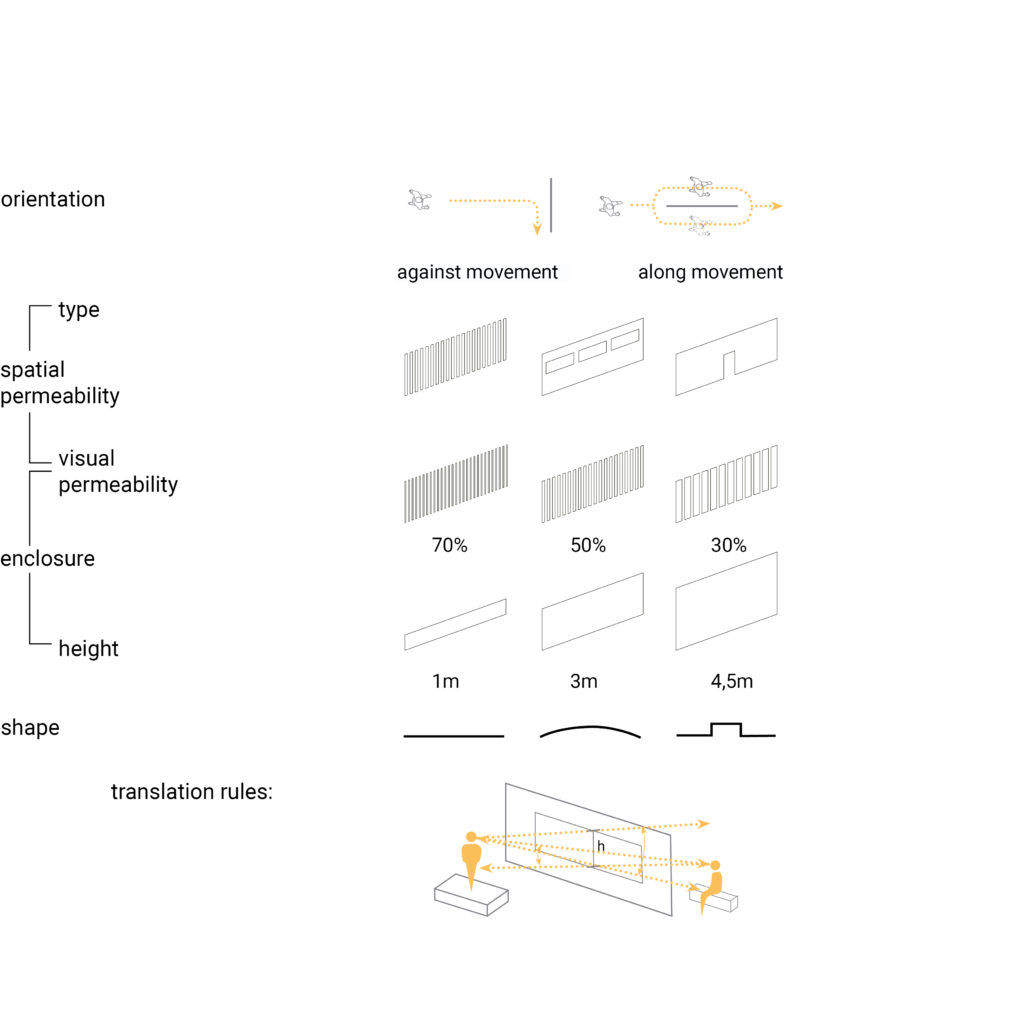
The second element is node, which is a planar element to accommodate multiple activities. They can be located in different spaces with different sizes. The pedestrian flow around the nodes will be used to define the height and type of different nodes.
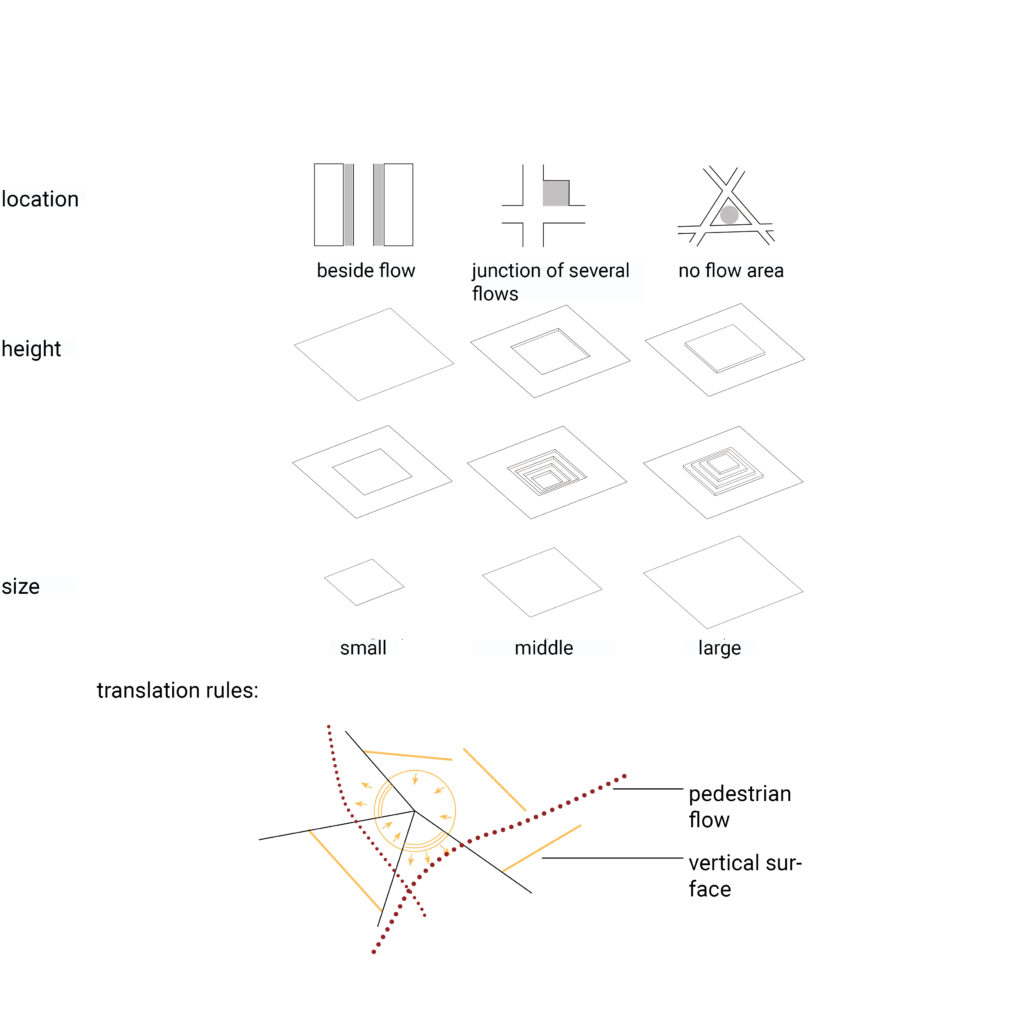
The third element is interactive radius. It is not a physical element but a visualization of how willing people are to open themselves up at different spots. It is affected by so many different factors and will only be used as an evaluation after some steps.
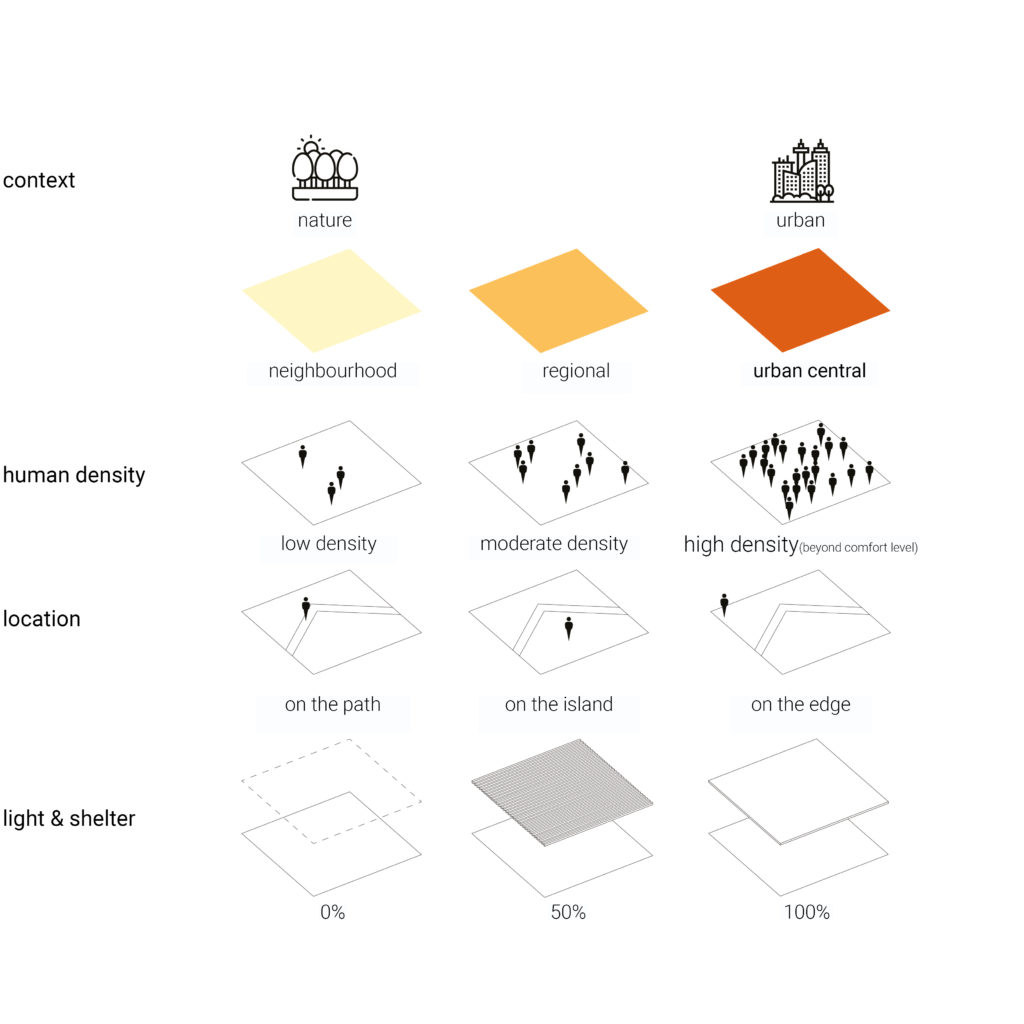
I then combined these elements together randomly on a white canvas to get a better understanding of the elemental dynamics.
